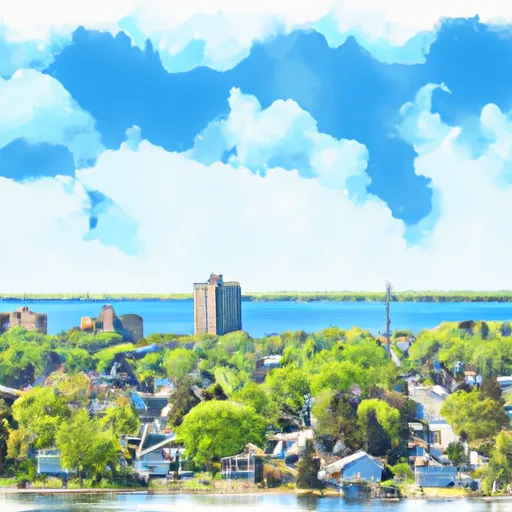-
 Snoflo Premium
Snoflo Premium
Get unlimited access to all our content
With no Ad interruptions! - Start Your Free Trial Login with existing account
Long-Lake
Eden Index
Climate
6.2
•
Recreation
6.0
•
Community
•
Safeguard
4.6/10

Long Lake is a picturesque village located in Michigan, known for its stunning natural beauty and ample outdoor recreation opportunities. The climate in Long Lake is characterized by warm summers and cold winters. Summer temperatures average around 80°F, providing an ideal environment for swimming, boating, and fishing in the crystal-clear waters of Long Lake. In winter, temperatures drop to an average of 20°F, creating excellent conditions for ice fishing and snowmobiling.
Hydrologically, Long Lake is fed by several streams and natural springs, ensuring a clean and abundant water supply. The lake is renowned for its exceptional water quality and is home to a diverse range of aquatic species.
Outdoor enthusiasts will find plenty of recreational activities to enjoy in Long Lake. The lake offers excellent opportunities for boating, water skiing, and kayaking. Anglers can try their luck with the plentiful fish species inhabiting the lake, including bass, pike, and walleye. On land, there are numerous hiking and biking trails that wind through the lush forests surrounding the lake, providing breathtaking views and opportunities to spot wildlife.
In conclusion, Long Lake, Michigan, offers a favorable climate, pristine water quality, and a plethora of outdoor recreation options, making it a sought-after destination for nature lovers and adventure seekers alike.
What is the Eden Index?
The Snoflo Eden Index serves as a comprehensive rating system for regions, evaluating their desirability through a holistic assessment of climate health, outdoor recreation opportunities, and natural disaster risk, acknowledging the profound impact of these factors on livability and well-being.
Climate Health Indicator (CHI): 6.2
Long-Lake receives approximately
751mm of rain per year,
with humidity levels near 83%
and air temperatures averaging around
7°C.
Long-Lake has a plant hardyness factor of
4, meaning
plants and agriculture in this region thrive during a short period during spring and early summer. Most
plants will die off during the colder winter months.
By considering the ideal temperature range, reliable water supplies, clean air, and stable seasonal rain or snowpacks, the Climate Health Indicator (CHI) underscores the significance of a healthy climate as the foundation for quality living.
A healthy climate is paramount for ensuring a high quality of life and livability in a region, fostering both physical well-being and environmental harmony. This can be characterized by ideal temperatures, reliable access to water supplies, clean air, and consistent seasonal rain or snowpacks.
Weather Forecast
Streamflow Conditions
Northwestern Lake Huron
Area Rivers
Northwestern Lake Huron
Snowpack Depths
Northwestern Lake Huron
Reservoir Storage Capacity
Northwestern Lake Huron
Groundwater Levels
Recreational Opportunity Index (ROI): 6.0
The Recreational Opportunity Index (ROI) recognizes the value of outdoor recreational options, such as parks, hiking trails, camping sites, and fishing spots, while acknowledging that climate plays a pivotal role in ensuring the comfort and consistency of these experiences.
Access to outdoor recreational opportunities, encompassing activities such as parks, hiking, camping, and fishing, is crucial for overall well-being, and the climate plays a pivotal role in enabling and enhancing these experiences, ensuring that individuals can engage in nature-based activities comfortably and consistently.
Camping Areas
| Campground | Campsites | Reservations | Toilets | Showers | Elevation |
|---|---|---|---|---|---|
| Pinckney State Rec Area | 235 | 907 ft | |||
| Appleton Lake - Brighton Rec Area | None | 888 ft | |||
| Bishop Lake - Brighton Rec Area | None | 901 ft | |||
| Murray Lake - Brighton Rec Area | None | 875 ft | |||
| DeTour - Lake Superior State Forest | 21 | 592 ft |
Nearby Ski Areas
Catastrophe Safeguard Index (CSI):
The Catastrophe Safeguard Index (CSI) recognizes that natural disaster risk, encompassing floods, fires, hurricanes, and tornadoes, can drastically affect safety and the overall appeal of an area.
The level of natural disaster risk in a region significantly affects safety and the overall livability, with climate change amplifying these risks by potentially increasing the frequency and intensity of events like floods, fires, hurricanes, and tornadoes, thereby posing substantial challenges to community resilience and well-being.
Community Resilience Indicator (CRI):
The Community Resilience Indicator (CRI) recognizes that education, healthcare, and socioeconomics are crucial to the well-being of a region. The CRI acknowledges the profound impact of these elements on residents' overall quality of life. By evaluating educational resources, healthcare accessibility, and economic inclusivity, the index captures the essential aspects that contribute to a thriving community, fostering resident satisfaction, equity, and social cohesion.

